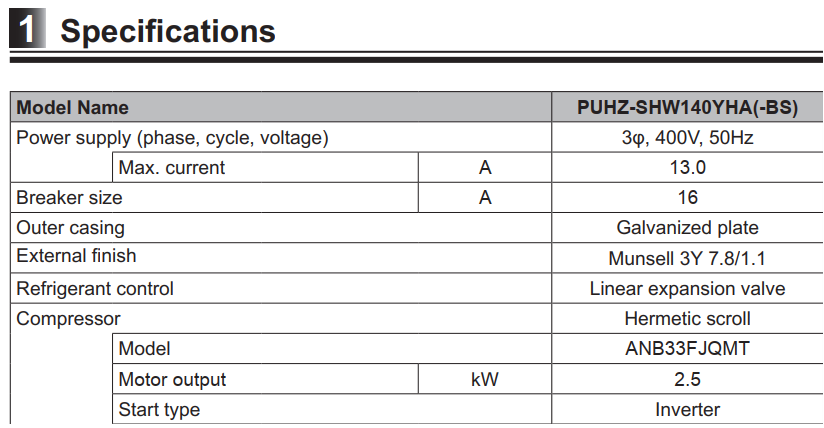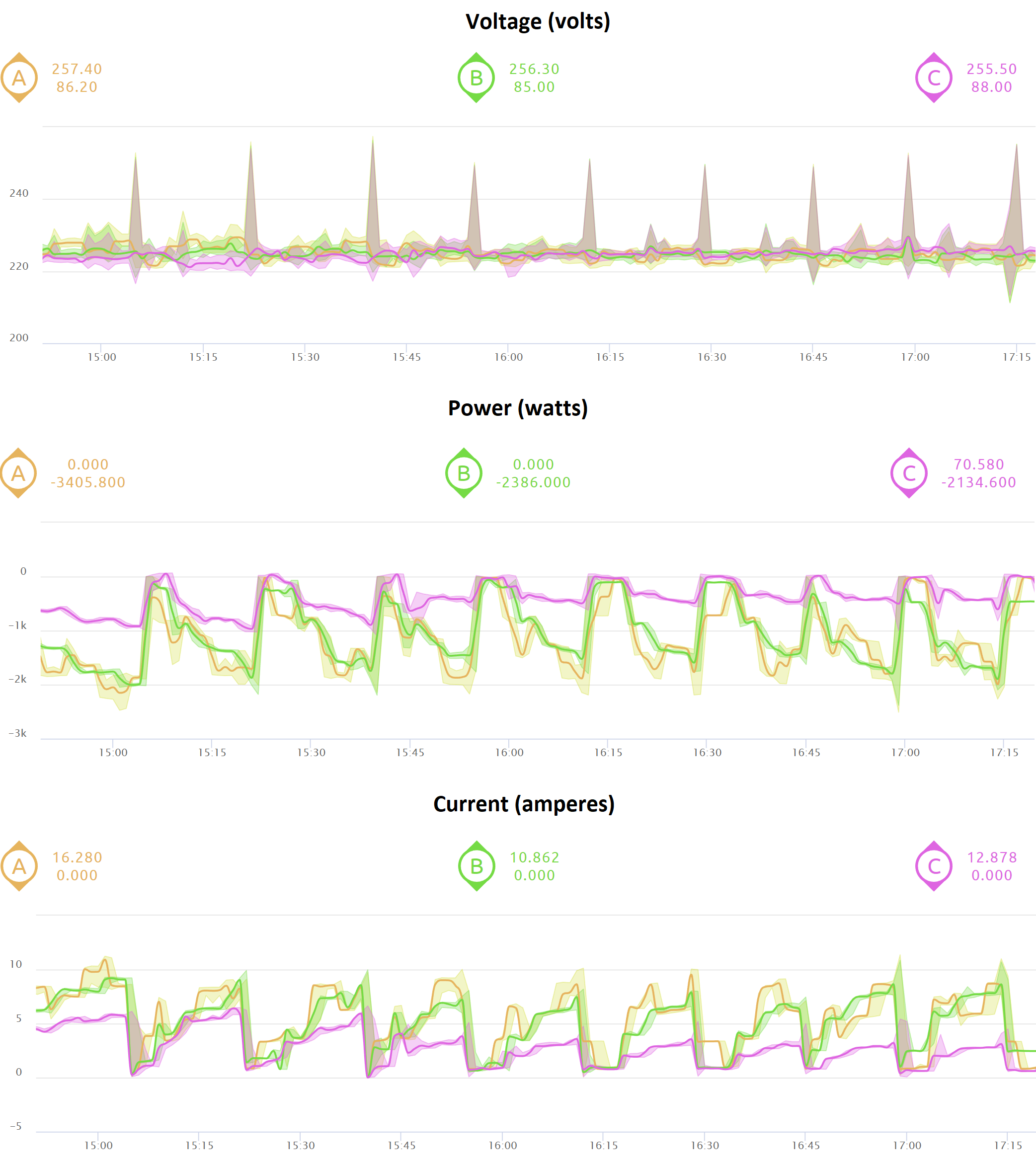Hello.
I'm trying to calculate the power consumption of a heat pump so that I can buy an electric generator with the required power production in case of a power outage.
My heat pump specifications:

Do I understand correctly that the value specified in the specification "maximum current: 13 Amperes" is the current consumed in only one phase? That is, in total, the heat pump will consume 39 amperes (15600 watts) in a worst case?
Or is it the total current consumed by the all three phases (5200 watts)?
Also, it is interesting to know recommendations for starting a heat pump from a generator as a whole: what are the pitfalls; how much generator power reserve is needed; what about compressor starting currents, etc.
Thank you.









